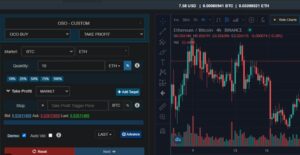
Smart contract audit as a service (SCAAS) is an independent assessment of the security of smart contracts. It is a crucial step in the development of any blockchain application, as it helps to identify and mitigate potential vulnerabilities that could be exploited by attackers.
There are a number of different SCAAS providers on the market, each with its own unique approach to the audit process. However, there are some general steps that are common to most audits, such as:
1. Code Review:
- Manual Inspection: Experienced auditors meticulously examine the code’s structure, syntax, logic, and adherence to best practices.
- Focus Areas:
- Coding errors, such as typos or incorrect syntax
- Security vulnerabilities, like reentrancy attacks, integer overflows, or access control issues
- Logic flaws that could lead to unintended behavior or financial losses
- Compliance with industry standards and guidelines
- Tools: Static analysis tools may be employed to automate initial checks for common vulnerabilities.
2. Formal Verification:
- Mathematical Proof: Rigorous mathematical techniques are used to establish the correctness of the code’s logic and behavior under all possible inputs and conditions.
- Formal Methods: Tools like model checkers and theorem provers are employed.
- Benefits:
- Greater assurance of security and reliability compared to code reviews alone
- Ability to detect subtle errors and vulnerabilities that might escape manual inspection
3. Penetration Testing:
- Simulation of Attacks: Auditors attempt to breach the smart contract through simulated attacks to uncover potential weaknesses.
- Common Techniques:
- Fuzz testing: Involves feeding random inputs to identify unexpected behavior or crashes.
- Exploitation of known vulnerabilities: Auditors leverage knowledge of common attack patterns to test contract resilience.
4. Reporting:
Comprehensive Report: Auditors create a thorough report outlining:
- Identified vulnerabilities and their severity levels
- Recommendations for remediation and mitigation strategies
- Best practices to enhance contract security
- Overall assessment of the contract’s security posture
Transparency and Trust: Audit reports are crucial for:
- Demonstrating commitment to security
- Informing users and investors about potential risks
- Enabling informed decision-making
The benefits of using SCAAS include:
- Improved security: SCAAS can help to identify and mitigate potential vulnerabilities in your smart contracts, which can help to protect your users and their funds.
- Increased trust: A successful SCAAS can help to build trust in your project by demonstrating that you are taking security seriously.
- Peace of mind: Knowing that your smart contracts have been audited by a reputable provider can give you peace of mind and allow you to focus on other aspects of your project.
If you are developing a blockchain application, it is essential to consider using SCAAS. It is a relatively small investment that can make a big difference in the security of your project.
Here are some of the things to keep in mind when choosing an SCAAS provider:
- Reputation: Choose a provider that has a good reputation in the blockchain security community.
- Experience: Make sure the provider has experience auditing smart contracts for similar projects.
- Methodology: Ask the provider about their audit methodology and what tools and techniques they use.
- Cost: Get quotes from a few different providers before making a decision.
I hope this helps! Let me know if you have any other questions.




